The moment I landed in Sicily, I couldn’t help but feel I was tracing the steps of one of TV’s most iconic detectives. My fascination with Inspector Montalbano pulled me into southeastern Sicily, where the RAI series transforms coastal towns into the fictional Vigata.
The stunning landscapes and charming villages you see in the Montalbano series? They’re absolutely real, and you can visit them—from Ragusa Ibla‘s tangled lanes to the sleepy beach town of Punta Secca.
I wandered through Ragusa Ibla’s maze-like alleys, getting lost more than once. These old streets set the stage for Vigata in the show. The famous Circolo di Conversazione, where Montalbano often meets Doctor Pasquano, sits right by Piazza Duomo.
Every corner seemed to reveal another spot I recognized from my favorite episodes. It was a bit surreal, honestly.
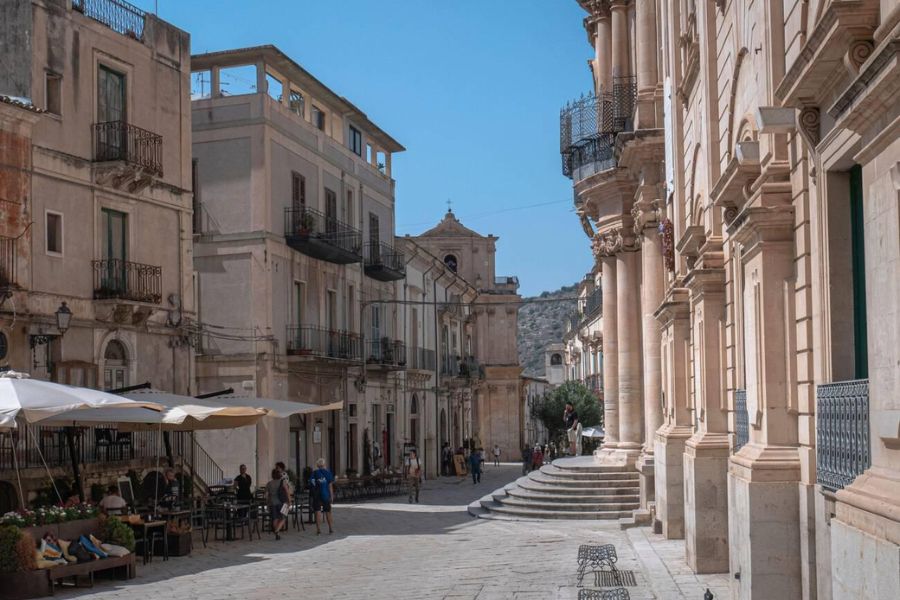
The real thrill came when I found Montalbano’s actual house on the beach at Punta Secca. Standing on his terrace, watching the same waves he does during his morning swims, I felt a weird kinship with the character. Locals have embraced the show’s fame, and most are happy to point fans toward filming spots or share stories from when the crew comes to town.
Planning My Journey Through Sicily
After falling for Inspector Montalbano on TV, I just had to see those sun-soaked Sicilian settings for myself. Planning the trip took some effort—timing, picking the right towns, and sorting out travel details all mattered.
Choosing the Best Time to Visit
Sicily changes with the seasons, but honestly, May and September felt perfect for Montalbano tourism. The temperatures hover around 70-80°F, which is just right for wandering through outdoor filming locations without melting.
If you come in winter (November-February), you’ll dodge the crowds but risk rainy days that can spoil beach plans. Summer? Gorgeous, but packed and pricey.

I picked late May. The light had that golden glow you see on screen, and the beaches were warm enough for me to dip my toes where the Inspector himself ponders his cases.
Mapping Out Inspector Montalbano Filming Locations
The southeastern tip of Sicily is really “Montalbano Country,” especially around the baroque towns of the Val di Noto. I made my own Google Map with all the key filming spots.
Must-Visit Montalbano Locations:
- Punta Secca: Where you’ll find Montalbano’s famous beachfront house and that iconic terrace
- Ragusa Ibla: The baroque gem that stands in for Vigàta
- Scicli: The real-life police station used as Montalbano’s headquarters
- Modica: The chocolate town that pops up in several episodes
I set aside 5-7 days for this region. Sure, you can join a Montalbano tour, but I liked having a rental car so I could linger wherever I wanted.
Travel Tips for Montalbano Fans
Staying near Ragusa or Modica made day trips easy. I found small B&Bs felt the most authentic, and plenty advertised how close they were to filming locations.
Learning a few Italian phrases made a big difference. Tourist spots have English speakers, but the real-deal places from the show? Not always.
I signed up for a local travel newsletter and scored a “FLASH30%” discount on a guided Montalbano tour. That insider info led me to some less obvious filming locations.
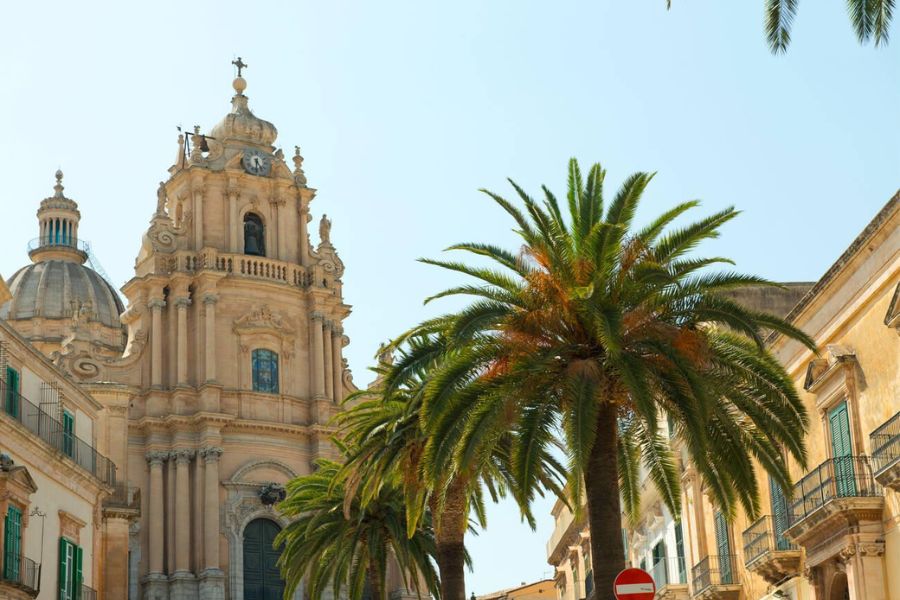
Pack good walking shoes! Those baroque towns look gorgeous on screen, but the steep hills and cobblestones will punish your feet if you’re not prepared.
Stepping Inside Vigata: Discovering Iconic Filming Towns
Walking through southeastern Sicily feels like stepping straight into Montalbano’s world. Fiction and reality blur among the baroque buildings and sparkling coastline.
Scicli: The Heart of Fictional Vigata
Scicli grabbed me right away with its authentic Sicilian vibe. It’s one of the main filming locations for Vigata. I tracked down the famous Vigata police station on Mormino Penna Street—actually Scicli’s Town Hall.
The building’s elegant front and central spot make it instantly recognizable for fans. Wandering Scicli’s tight streets, it really felt like I’d entered Montalbano’s world.
Beyond the police station, Scicli has beautiful churches and piazzas that show up often in the series. The town’s laid-back pace meant I could explore without crowds, making it easier to spot those familiar backdrops.
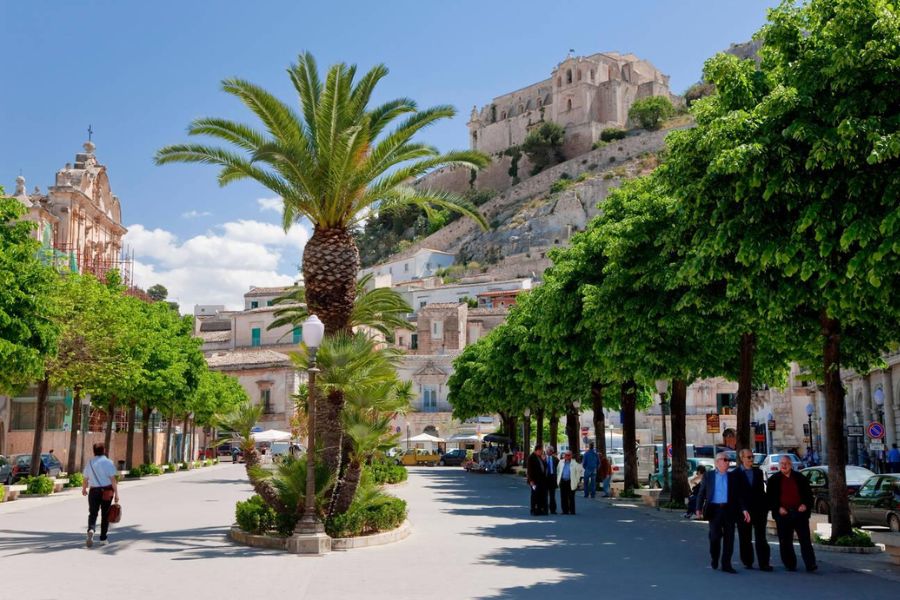
Cafés sometimes display photos from filming days, and a few locals happily shared stories about meeting the actors.
Ragusa Ibla’s Stunning Baroque Streets
Ragusa Ibla blew me away. Perched on a limestone hill, it’s where many of the most iconic Vigata scenes come to life, especially around Piazza Duomo and the magnificent Cathedral of San Giorgio.
I spent hours just wandering the winding lanes, soaking up the baroque architecture that gives the show its moody atmosphere. The way sunlight hits those stone buildings, casting deep shadows, feels straight out of the series.
The Circolo di Conversazione, with its blue exterior, pops up often in the show. It’s easy to spot if you’re exploring.
I tried some local seafood at restaurants Montalbano himself would probably love. If you get the chance, order pasta with sardines and enjoy the view.
The Charming Seaside of Punta Secca
Finding Montalbano’s seafront home was a real highlight. The house sits right on the sandy beach in Punta Secca, a tiny fishing village.
I strolled the shoreline early one morning, watching fishermen get their boats ready—just like in the show’s opening scenes. Montalbano’s house now has a small sign, and you’ll usually spot a few fans snapping photos.
The village has this peaceful, sleepy vibe that matches the show’s seaside scenes perfectly. Nearby, I found the little restaurant where Montalbano enjoys seafood in a few episodes.
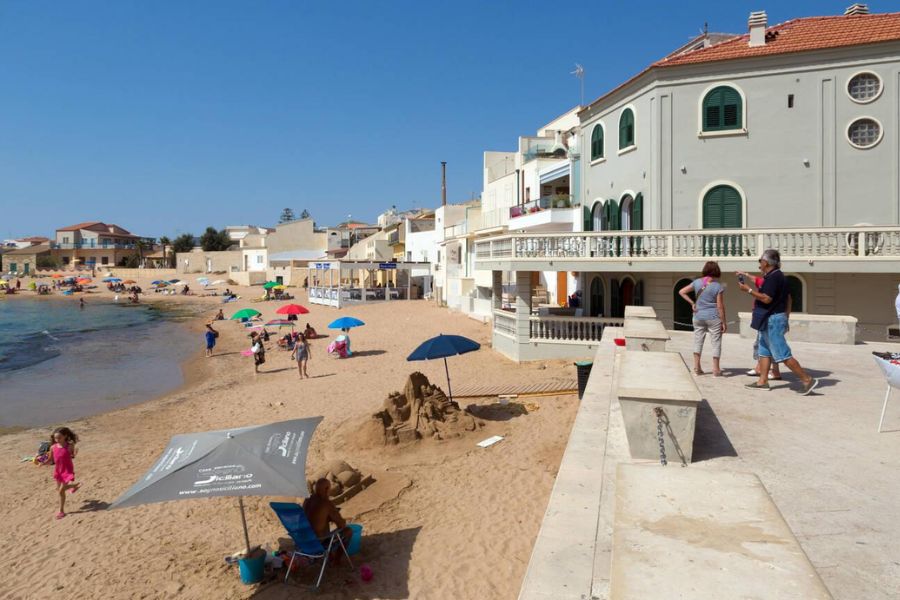
Punta Secca’s clear waters and golden sand make it worth visiting even if you’re not a fan. I spent a lazy afternoon swimming where Montalbano takes his famous morning dips.
Noto and Modica: Picturesque Backdrops
Noto’s baroque architecture is so impressive it’s a UNESCO World Heritage site—and it pops up in several Montalbano episodes. Walking down Corso Vittorio Emanuele, I kept spotting buildings I recognized.
At sunset, the honey-colored limestone glows, making everything look cinematic. The cathedral steps appear in the background of plenty of scenes.
Modica surprised me with its split-level setup and legendary chocolate. The town appears in the series as part of the fictional Montelusa province. The Church of San Giorgio towers above, showing up in some of the more dramatic episodes.
If you go, try Modica’s chocolate. It’s made using ancient Aztec methods and tastes like nothing else. Exploring these towns, I realized Sicily’s real beauty actually outshines the show’s cinematography.
Beyond the Screen: Exploring Sicily’s Rich Culture
Sicily’s appeal stretches way past the scenes of Inspector Montalbano. The island offers incredible food, fascinating history, and a deep connection to cinema.
Sampling Sicilian Cuisine and Arancini
Traveling through Montalbano’s Sicily, I couldn’t resist the local food. The island’s dishes tell the story of its history and mix of cultures.
Arancini became my go-to snack. These golden fried rice balls, stuffed with ragù, peas, and cheese, are everywhere—from street carts to sit-down restaurants. In Ragusa, I found versions with pistachios and saffron that I’d never tried before.
The seafood along the coast is unforgettable. In Punta Secca, near Montalbano’s house, I had sea bass cooked with olive oil and lemon that still makes my mouth water.

Markets in towns like Scicli overflow with colors and smells. The local produce, cheeses, and street food give you a taste of the real Sicily, beyond what you see on TV.
Visiting Museums and Archaeological Sites
Sicily’s archaeological treasures kept surprising me. The island holds some of the Mediterranean’s most impressive ancient ruins and artifacts.
In Syracuse, I visited the Archaeological Park Neapolis and saw the Greek theater from the 5th century BC. They still put on performances there, connecting the present to ancient traditions.
The Valle dei Templi in Agrigento blew my mind with its massive, well-preserved Greek temples. Sunset there felt almost magical.
Museums across the island showcase treasures from every era. The Regional Archaeological Museum in Palermo has the famous Palermo Stone and artifacts from Phoenician, Greek, Roman, and Arab times.
Many sites offer sweeping views that help you understand why Sicily was so important in history. These vistas also show up in Montalbano’s more thoughtful scenes.
The Influence of Cinema: The Godfather and Cinema Paradiso
Montalbano brought me to Sicily, but other films have shaped the island’s image too. The Godfather trilogy shot several key scenes in small Sicilian towns.
I visited Savoca, where Bar Vitelli from The Godfather still welcomes visitors. Sitting on the terrace with a lemon granita, where Michael Corleone once sat, felt a bit unreal. The church from the wedding scene is right up the hill.
Cinema Paradiso, the film about a small Sicilian cinema, captured the feel of post-war village life. Its locations in Palazzo Adriano show off Sicily’s timeless charm.
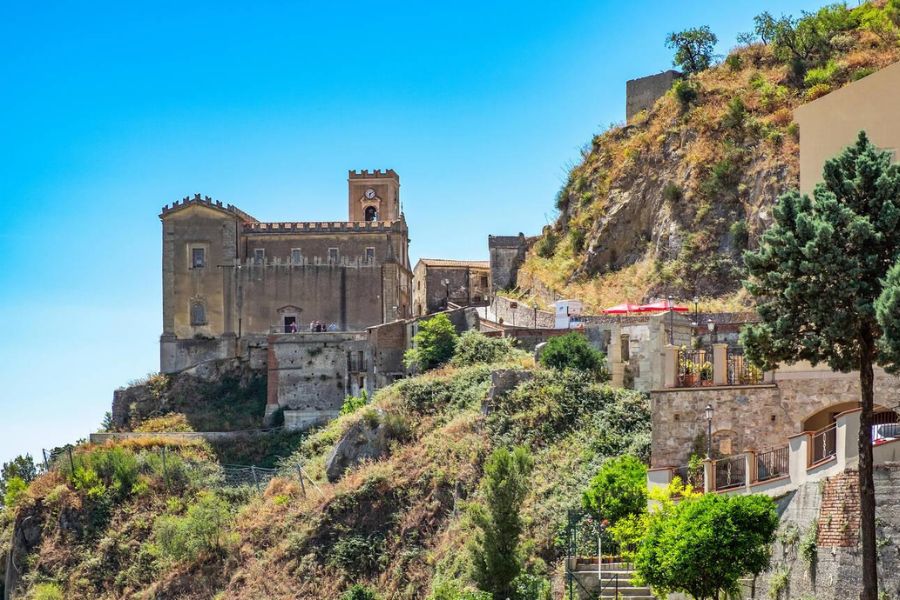
Film fans from all over come to these spots. Local guides run tours focusing on Sicily’s cinematic history, sharing behind-the-scenes stories and fun trivia.
These films show off Sicily’s landscapes in their own way, different from Montalbano. From the coast to the mountains, Sicily gives filmmakers endless choices.
Walking in Montalbano’s Footsteps: My Favorite Scenes
Chasing down Montalbano filming locations in southeastern Sicily felt like I was stepping straight into the show. Each place had its own vibe, from official buildings to seaside views that made me feel like I was right there with Salvo, piecing together clues.
The Chief’s Office at Palazzo Municipale
The Palazzo Municipale in Scicli stands in for the Vigàta police station. Walking through its doors gave me chills. It’s a gorgeous baroque building, and in the show, it’s where Montalbano delivers his big case-solving moments.
I spent nearly an hour just taking in the details. The desk, the windows, even the light fixtures matched what I’d seen on screen for years.
It was funny watching real municipal workers go about their day while fans like me snapped photos. The building works as both a government office and a kind of shrine for Montalbano fans.
The nearby streets of Scicli show up in many exterior shots too. As I walked them, I could almost hear Catarella’s confused phone calls bouncing off the stone walls.
Churches and Town Squares That Set the Scene
The Duomo di San Giorgio in Ragusa Ibla appears again and again in the series, and in person, it’s even more stunning. Its grand staircase often hosts important conversations between characters.
In Modica, I wandered through Piazza Duomo, where several big scenes were filmed. The square buzzes with the same mix of locals and tourists you see on screen.
Porto Empedocle, which inspired Camilleri’s fictional Vigàta, lets you glimpse the author’s world. The town square feels just as sun-baked and timeless as described in the books.

What makes these places special isn’t just their role in the show, but how they keep their authentic Sicilian character. The baroque architecture of these UNESCO towns makes the perfect stage for mysteries and dramatic moments.
Markets, Cafés, and Local Life
The bustling markets of Siracusa lit up every one of my senses. Like Montalbano, I wandered over to the fresh seafood stalls, where vendors shouted their daily catches with a kind of practiced pride.
At Caffè Sicilia in Noto, I ordered cannoli that could easily compete with the ones Montalbano devours in those thoughtful moments. The café’s vintage interior almost transports you into the scenes where characters swap vital case info.
Local trattorias around Porto Empedocle serve up the same seafood pasta that makes Montalbano pause his investigations for a proper meal. I tried his favorites at a seaside spot and, honestly, I get the food obsession now.
These everyday places peel back the curtain on real Sicily, far beyond the crime plots. Locals gathering for afternoon coffee or evening strolls reveal the community bonds that quietly shape Montalbano’s world.
Seaside Escapes and Beach Moments
The iconic Montalbano house at Punta Secca beach had been at the top of my list. This seafront home, with its famous veranda, sits right on the sand—just like in those opening scenes where Salvo heads out for his morning swim.
I showed up at sunset, when the Mediterranean glowed gold. Families still lingered on the beach, mostly ignoring the TV fame of the spot.
The lighthouse and harbor at Porto Empedocle appear in so many water-related investigations. As fishing boats pulled in with their daily catch, I could almost see Montalbano questioning sailors about strange goings-on at sea.
Donnalucata’s beach promenade, where Montalbano often walks to think things through, gave me the same peaceful place to reflect on how fiction and reality blur together in this part of Sicily.
Extra Inspiration: Sicilian Adventures Off the Beaten Path
While Montalbano’s filming locations draw plenty of fans, Sicily hides remarkable historical treasures and corners worth a detour. The island’s ancient ruins and charming towns make for perfect side trips if you’re up for more than just TV settings.
Valley of the Temples and Ancient Wonders
The Valley of the Temples in Agrigento left me honestly speechless. These magnificent Greek temples stand tall against the blue Sicilian sky, and the site ranks as one of the best-preserved collections outside Greece.
I spent a whole morning wandering around the Temple of Concordia. It’s almost completely intact since the 5th century BC, and its golden columns practically beg for photos—especially at sunset, when the light turns everything magical.
The Archaeological Park sprawls over 1,300 hectares and holds not just temples, but necropolises, ancient dwellings, and Byzantine tombs. I’d say hire a local guide, because they’ll make these ancient stones come alive with stories.
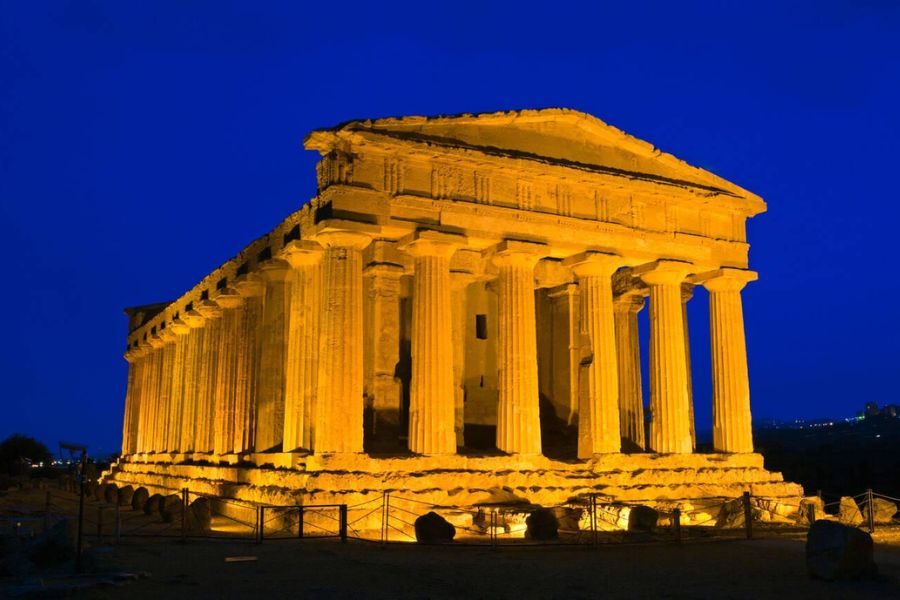
Try to visit early in the morning or late in the afternoon to dodge both the crowds and the blazing Sicilian sun. The site is huge, so comfy shoes and water are a must.
Visiting Agrigento and Segesta
Agrigento’s old town deserves a wander, with its twisty medieval streets and cozy piazzas. I stumbled upon some lovely restaurants serving true Sicilian food, far from the touristy areas.
Segesta, about two hours northwest of Agrigento, boasts another archaeological wonder—a perfectly preserved Doric temple standing alone among rolling hills. The place feels almost mystical.
The nearby ancient theater gives you sweeping views of the countryside. I managed to catch a summer evening performance of a Greek tragedy, staged right where the ancients once sat.
Between sites, I stopped at roadside stands for blood oranges, almonds, and local cheeses. Those little impromptu picnics turned into some of my favorite moments.
Hidden Gems: Taormina, Messina, and Corleone
Taormina sits dramatically on a hillside, with Mount Etna and the Mediterranean stretched out below. Its ancient Greek theater frames the view like it was made for postcards. I spent hours exploring the Corso Umberto, ducking into ceramic shops and grabbing granita—Sicily’s famous icy treat.
Messina surprised me, honestly. Most people just pass through on the ferry, but the astronomical clock at the cathedral square puts on a show at noon that draws a crowd.
Corleone, best known for its Mafia lore, is working to rewrite its story. The Anti-Mafia Museum offers thoughtful context on Sicily’s tangled history, and the countryside around town has hiking trails winding through vineyards and olive groves.
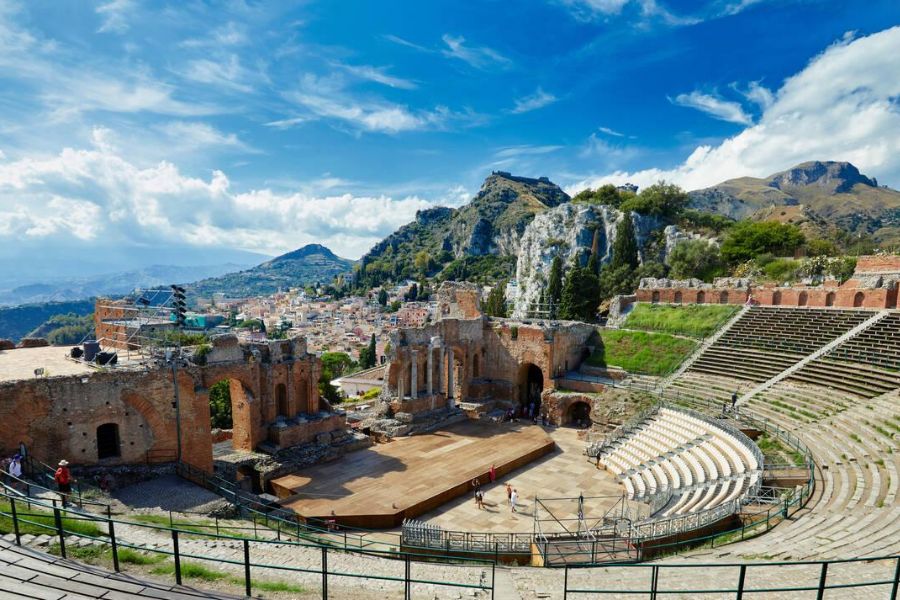
These smaller towns hold local festivals all year, and I lucked into a harvest celebration with traditional music and dancing—a world away from the usual tourist spots.
Capturing Memories: Visual Stories from Sicily
Sicily’s landscapes and Montalbano filming spots offer endless chances for anyone who loves photography. The island’s unique light has a way of making even ordinary scenes look remarkable.
Best Spots for Panoramic Images
The terrace of Montalbano’s house in Puntasecca might just be the best panoramic view in southeastern Sicily. I spent ages there, waiting for the sea and sky to line up just right for photos.
Ragusa Ibla’s viewpoints give you incredible shots of baroque buildings from above. I stood at the top of those endless staircases, framing honey-colored stone against the blue sky.
The coastline near Syracuse is rugged and dramatic, especially at sunset. My wide-angle lens barely managed to fit in the wild landscape that gives the Montalbano series its distinct atmosphere.
For a real showstopper, I’d pick the Scala dei Turchi. Its white cliffs against the turquoise sea look almost unreal in the morning light.
Taking Authentic Stock Photos and Videos
Sicily’s street life bursts with color, perfect for stock photos that actually feel authentic. Local markets spill over with fresh produce—ideal for food shots that tell the story of Sicilian cuisine.
I shot short videos of fishermen in Puntasecca, right where Montalbano often broods over his cases. The unscripted movements and real conversations make for footage that’s anything but staged.
Young couples strolling along the same beaches where Montalbano meets Livia create genuine, romantic moments. These candid scenes capture both the spirit of the show and daily Sicilian life.
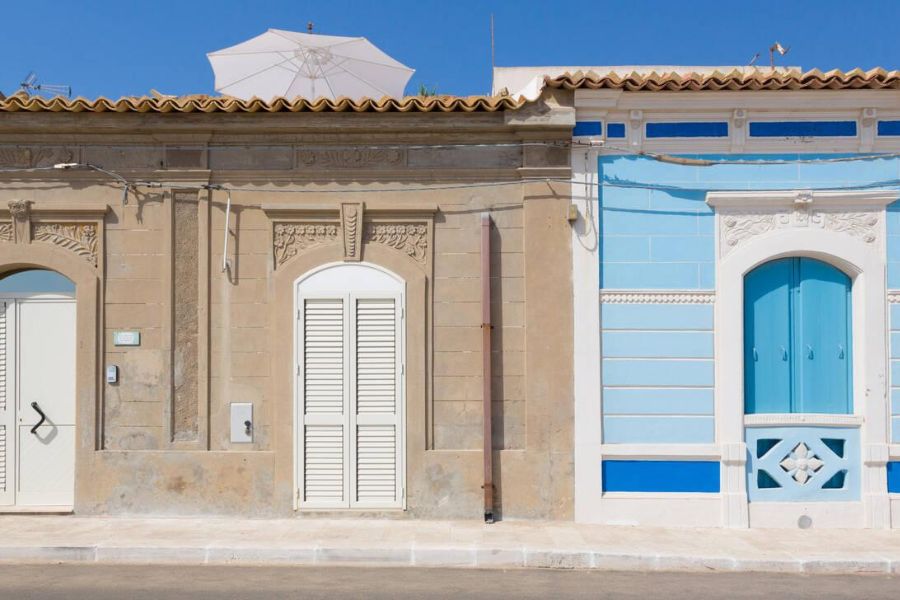
For culturally rich stock photos, I snapped baroque churches and piazzas featured in Young Montalbano episodes. The architectural details make great backgrounds for any travel collection.
Travel Journals and Sharing My Next Project
I never expected my handwritten travel journal to become such a treasure. It’s stuffed with quick sketches of Montalbano spots, plus a few pressed flowers and even some ticket stubs.
These little analog keepsakes feel like the perfect match for my digital photos. The mix gives the memories a bit more texture, honestly.
Now that I’m home, I’ve got a new project in mind: a photo book of my Sicilian trip. I’m not going the usual route—I’m grouping images by theme instead of by date.
So, I’ll have sections for food, architecture, and those wild coastline views. It just feels more fun that way, and the visuals pop.
Social media’s turned into my virtual travel journal lately. When I posted my Montalbano location photos, I ended up chatting with a bunch of fans planning their own Sicily trips.
Next up, I’m off to Paris. I want to track down filming spots from another series I love.
I think the jump from Sicilian sun to Parisian elegance will make for some pretty interesting photos. It should add a whole new vibe to my travel photography collection.

